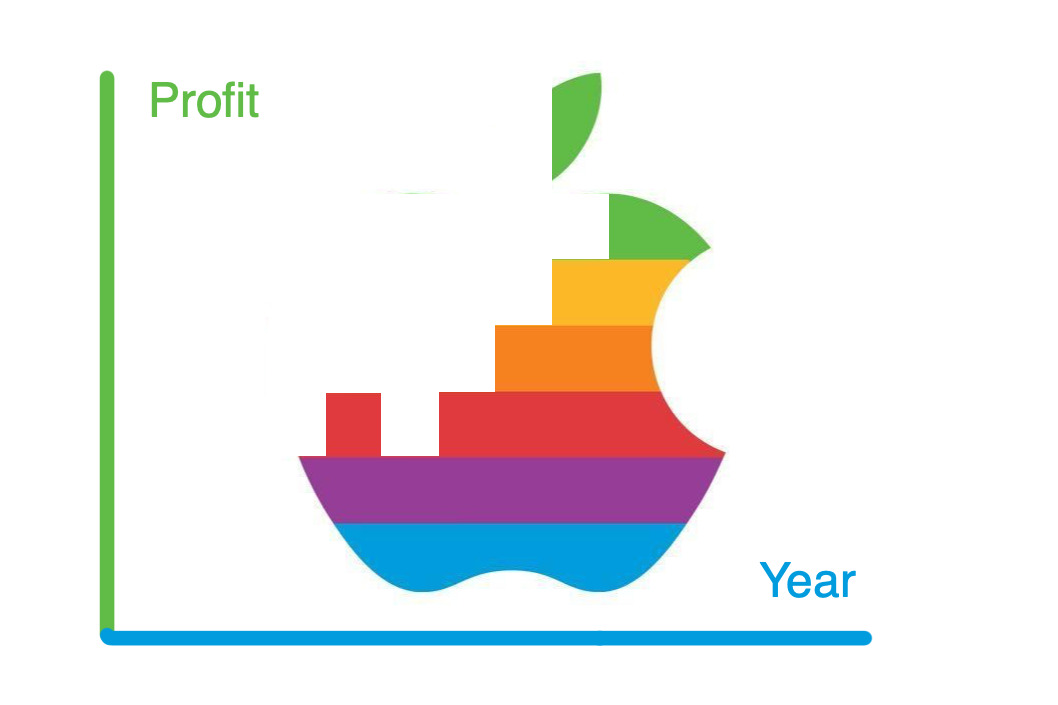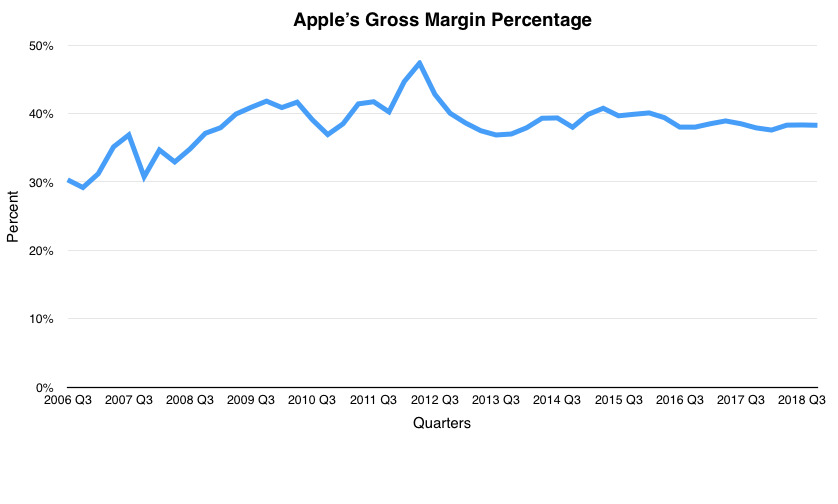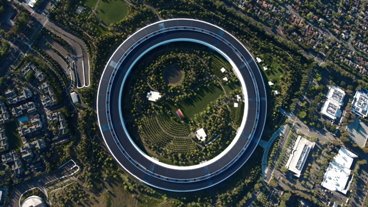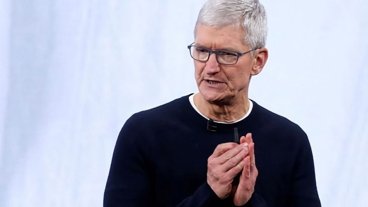If you think Tim Cook is 'robbing' you, then so was Steve Jobs
The company is making more cash than ever as a whole, but AppleInsider delves into the figures to see how much of that is through increased sales of hardware and how much is from Apple skimming more profit per device since Cook took over.
There's no doubt that iPhones, iPads, and just about everything Apple makes is more expensive now than before. Yet alongside that fact there's also an idea that the company is simply being more greedy and is milking us for ever more money because it can.
It's not as if Apple used to be a social club and only recently become a business, but still there's a limit. There's a point where Apple is making so much more profit per device that users start complaining. Apple talks a good talk about being focused on design but if it's really raking in so much more cash per product than talk is all it is.
Ideas and claims aren't enough, though. We want facts. We've taken Apple's gross profit margin figure for every year that we can get reliable, comparable data for. That's since 1994 — and between now and then the company's actual income has risen so much that every businessman or woman in the world must drool nightly.
There's a big difference between cash coming in the door and what a company's profit margin is, though. Even if Apple is selling rather a lot more hardware today than it did in, say, 1994, it's also having to spend a great deal of cash to make them.
So while the income figures don't tell us anything, the percentage profit does. We can directly compare how much profit Apple makes over the years by focusing only on the gross profit margin.
Methodology
To be clear, what we wanted to find out was a percentage figure for how much profit Apple makes each year. That calculation is a standard business accounting one and we used it on data taken from Apple's own annual report filings online. While the format of this has varied slightly since 1994, each report contains a top-line figure for sales and costs for the current year plus the two preceding ones.
Full disclosure: we found a discrepancy in the figures for 2008 as reported both then and as a preceding year in the 2010 reports. However, it amounted to a 0.9 percent difference so we presume there was an accounting correction and have taken the later figure as the final one.
Enviable profit margin
You're not going to grieve for Apple when you see these figures. Data from the latest 2018 annual report suggests an overall profit margin of 38.34 percent.
If that sounds big, remember that compared to any other technology company in the world, it's gigantic. For at least the two decades, computers have been sold on hair-thin margins — but never and still not by Apple.
The one thing this figure isn't, though, is evidence that Apple is getting more out of us per device as a percent in hardware sales. This year's figure is actually lower than any since 2014.
True, it's a close-run thing. In 2017 the gross profit margin was 38.47 percent, just 0.13 percent more. In 2016 it was 39.08 percent; in 2015 it was a remarkable 40.06 percent. Then in 2014 it was 38.59 percent.
Not since 2013 has the profit margin been lower than it is today and then it was just 37.62 percent or 0.72 percent less. That 2013 figure is notable, however, because the year before saw 43.87 percent gross profit margin.
There are good profit margins and there are ones that make you check the batteries in your calculator. Apple's 43.87 is stunning and its low in recent years of 37.62 isn't much less impressive.
The key thing there, though, is the phrase 'recent years'. Having gone back this far, we took it a step further and looked at how Apple's gross profit margin has fared under its last few CEOs.
Tim Cook versus Steve Jobs
Given that Apple's CEOs rarely change over at convenient accounting times, it's a little blurry who you can call responsible for which portion of Apple's financial history.
However, if we say Tim Cook was 2012 to the present day, that means he's kept Apple at an average 39.43 percent gross profit margin.
Taking Steve Jobs as CEO from 1998 to 2011, you see much greater range. He averaged 30.94 percent gross profit margin over those years but it went from a low of 25 percent in 1998 when he had to right the ship quickly, to a high of 40.48 in 2011 when he clearly didn't.
That's a difference of 15.48 percent in gross profit margin between when Jobs took over from Gil Amelio to when Tim Cook took over from Jobs.
Just to complete the picture, former CEO Amelio got two years in charge with 1996's margin being 10 percent and 1997's being 19 percent. While we don't have data for the whole tenure of his predecessor, Michael Spindler, we do know that for both of his last two years, the gross profit margin was 26 percent.
It's not all iPhones
Don't take from this that under Jobs, Apple made 40.48 percent profit from every Mac sold. The company didn't sell a Power Macintosh 6100 for $1,699 in 1994 ($2,894 today) and go laughing to the bank with $687.76 ($1,171.51 today). Similarly, Apple is not today making 38.34 percent from every iPhone. It doesn't sell an iPhone XS Max with 512GB storage for $1,449 and pad out its collective wallets with $556.42.
No, that's the kind of margin it gets on AppleCare and its Services instead. You know, that segment that Apple has been talking about for three years, and is still is considered under-appreciated by most investors.
Until January's earnings report, we can't make a precise calculation about margin percents from AppleCare or any of the company's many, many other services. The figures we've got are overall ones and it's reasonable to assume that it costs Apple more to physically assemble and ship an iPhone XR than it is to email you a receipt for AppleCare.
However, AppleCare is not all profit unless everybody's iPhones miraculously never have any problems or damage. In reality, there's going to be a significant cost to Apple of covering issues through AppleCare and we cannot prove what that is.
Nobody can actually prove what the gross profit margin on Apple's various services like AppleCare, ApplePay, the iTunes Store and, for instance, selling us all more iCloud storage. Nobody outside Apple can do this because the company doesn't publish how much these services cost to run — at least not today.
So we can see from the annual report that the entirety of Apple's services for financial year 2018 earned the company $37,190,000 but for all we know, it spent $37,189,999 running them. However, just because we can't prove figures, that doesn't mean others haven't made a stab at calculating it.
Financial analysis company Above Avalon, for instance, has analyzed all the data that Apple does publish including ones such as how much it has paid to app developers. Since Apple keeps between 15 and 30 percent of all app sales, the company has estimated the profits of that part of the business.
It's made similar calculations and estimates in its latest analysis. The site's summary findings are that Apple is currently making around 55 percent gross profit margin on all its services.
The report claims that 75 percent of iCloud is pure profit, compared to 60 percent for AppleCare and 80 percent for Apple Pay. Remarks by Tim Cook and Chief Financial Luca Maestri support the supposition that Services are boosting margins — because they have confirmed that it does on more than one occasion.
Money changes everything
You can have gross profit of 50 percent but if you only sell a buck's worth of goods, that's not going to help you much. Apple, though, has increased its sales incredibly and maintained a very strong profit margin. It's done so from the company's most difficult times to today when, at least from the outside, it looks like these are the best financial times for Apple ever.
The company has always been strong on making profits and that is very impressive. It's not, though, some sign that the firm is now prioritizing money over design. It's not a sign that Apple is now greedily putting money before the quality of its products, or is cheating its owners somehow.
At least not more than it has in the past.
Keep up with AppleInsider by downloading the AppleInsider app for iOS, and follow us on YouTube, Twitter @appleinsider and Facebook for live, late-breaking coverage. You can also check out our official Instagram account for exclusive photos.
 William Gallagher
William Gallagher

-and-Gil-Amelio-xl.jpg)
-and-Steve-Jobs-xl.jpg)












 Mike Wuerthele
Mike Wuerthele

 Malcolm Owen
Malcolm Owen
 Chip Loder
Chip Loder


 Christine McKee
Christine McKee
 Michael Stroup
Michael Stroup







